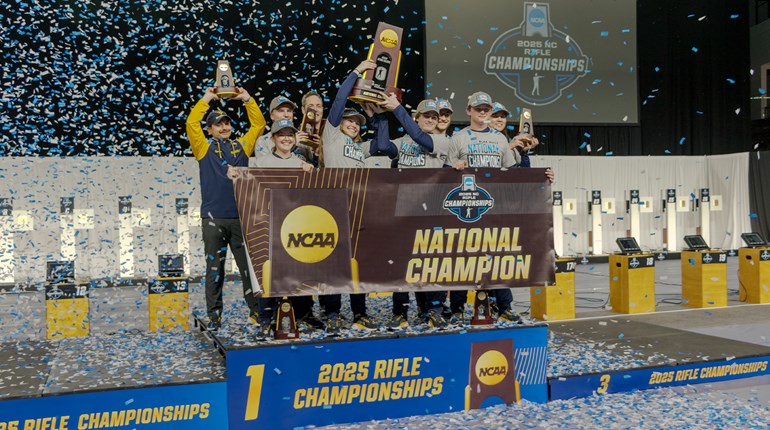
From the vault: The second installment of the 2009 NRA National Smallbore Rifle Championship match report, written by the late, great Hap Rocketto. As published in the February 2010 issue of Shooting Sports USA.
2009 Smallbore Rifle Championship—Revisited
By Hap Rocketto
We are revisiting the Camp Perry Smallbore matches reported in the Oct. 2009 issue of Shooting Sports USA. As Paul Harvey would say, “… and now, for the rest of the story.”
The NRA Smallbore Rifle Championships marked its 90th anniversary in 2009. Since Captain Edward “Ned” Crossman first created the event in 1919, it has gone through many changes and 2009 was no different.
Because of new targets in 2008, new position championship records were set in every event. The 2009 matches would see if those marks would be eclipsed. The first day of the tournament opened with strong winds, giving all of the competitors a challenge. Nevada’s Tarl Kempley won the metallic sight prone match with a 400-35X, while Larry Sawyer, from Minnesota, and Army Sergeant Hank Gray battled it out in a close race for second with Sawyer finishing ahead of Gray 400-33X to 400-32X.
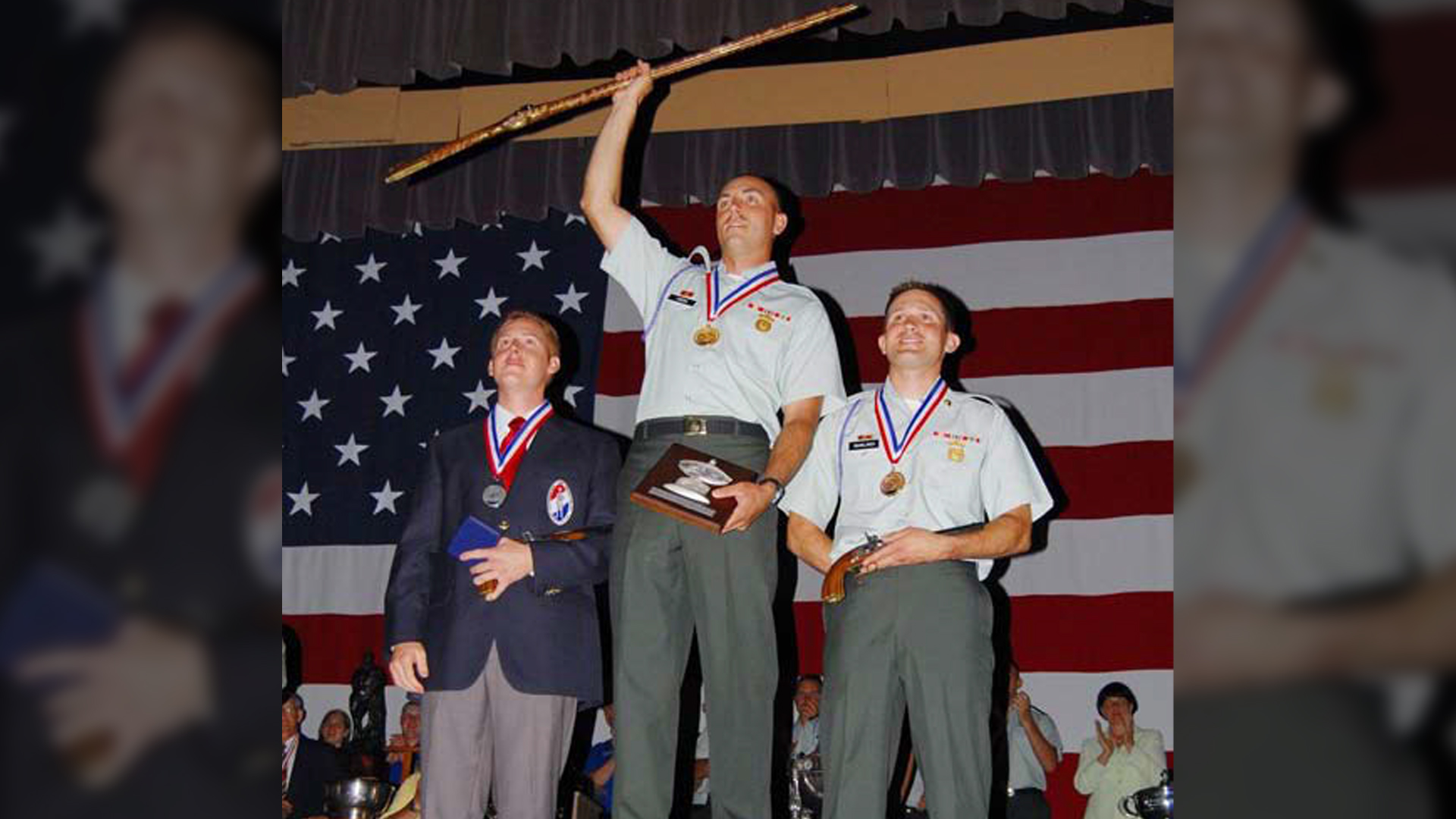
Army Specialist Matt Rawlings posted a fine 395-20X under difficult conditions to best Kempley’s 393-18X. Close on Kempley’s heels was the 2008 position champion—U.S. Army Marksmanshp Unit Sergeant George Norton, who shot a 392-13X. Kempley had a two-point lead on Specialist Joe Hein who was competing in his maiden year with the Army.
Kneeling is the final match in the daily aggregate and Kempley came through with a 398-23X, besting his sister, Reya, who placed second with a 396-18X. Bill Reynolds of Raleigh, North Carolina, was third with a 395-23X. On the strength of a solid performance, Kempley amassed a score of 1191-76X to become the metallic sight champion. Hein was second with an 1186-64X with Rawlings’ 1180-59X good for third. High woman and junior was Kansan Caitlin Morrissey, and Bay State resident Len Remaly topped the seniors.
Wind was not as much a factor on the second day, but rain would discomfort all the shooters but one. With scope-mounted rifles, Hein and teammate Dave Sprecher would go neck and neck, each posting a perfect 400-40X in the prone match, with Hein winning on a tiebreaker. Staff Sergeant Shane Barnhart was third with a 400-39X, while 37 other 400s of lesser X value were posted.
A close battle developed in the standing match where Greg Drown, of Fremont, Ohio, shot a 396-21X to best Norton and Rawlings who both dropped only five points. Norton was second with 20 Xs to Rawlings’ 19X in a razor edge finish.
Michelle Bohren, of Taylor, Michigan, won the final match with a 400-31X kneeling. Sawyer placed second in the final match, as he had done in the first, with another 400, only this time with 21Xs. In third was Sprecher’s 399-29X.
When the scores were totaled, Drown had taken the any sight championship with a score of 1195-73X. He was the one shooter who was helped by the rain for Drown suffers from Muscular Dystrophy, which inhibits his body’s ability to deal with heat. The cool rain helped Drown become the first disabled shooter to win a major smallbore rifle championship since the one-legged G. Wayne Moore won back-to-back prone titles in 1947 and 1948. Rawlings was second with an 1193-82X, just a single point ahead of Barnhart’s 1192-88X. In addition, Bohren took the high-woman honor.
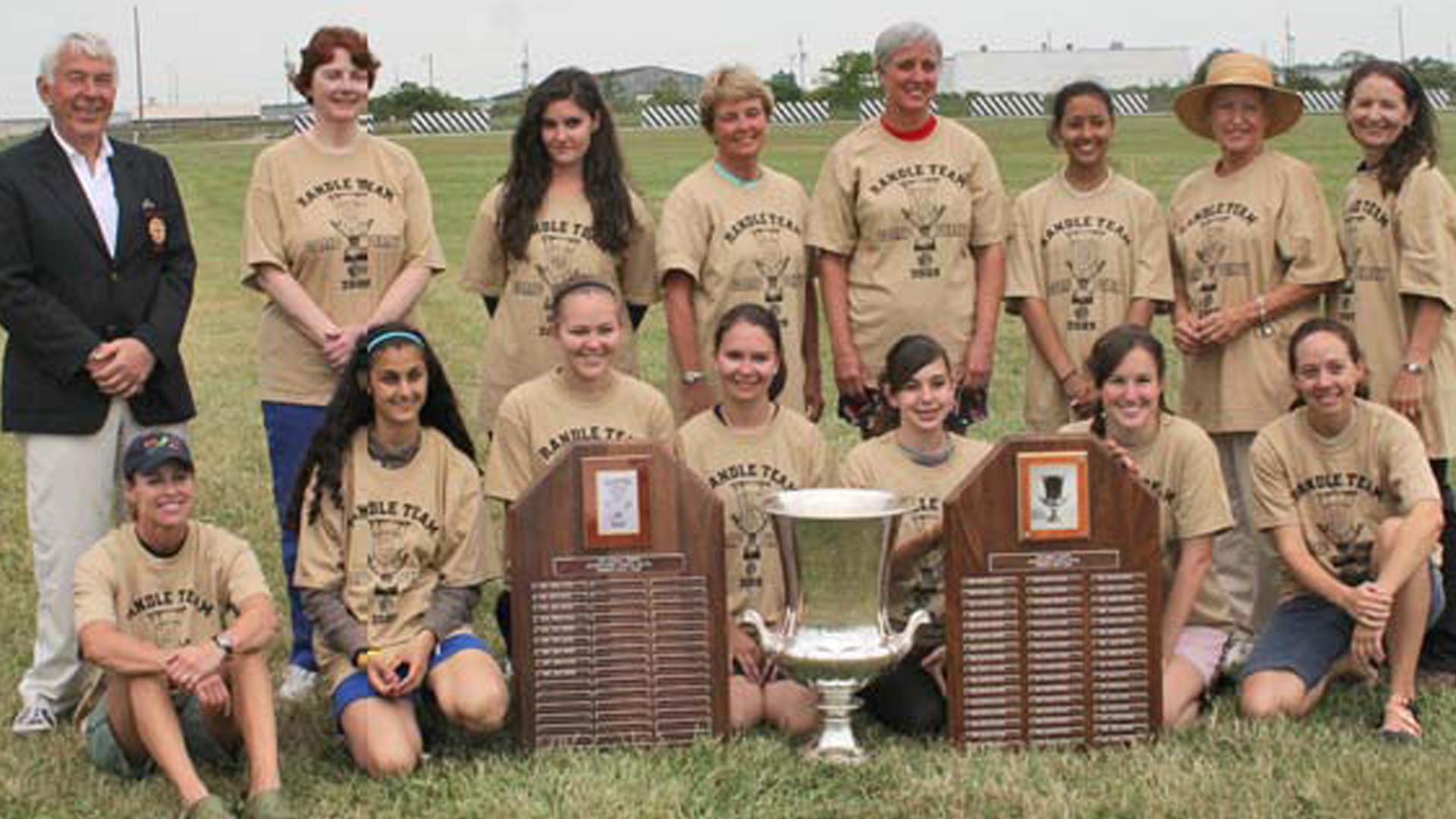
The Frank Parsons Trophy went to Hein whose 2378-141X gave him his first outdoor position title and the service championship. Civilian Champion Tarl Kempley was second with a 2376-142X and Rawlings took the bronze with a 2373-141X. Reya Kempley earned the high woman title and Remaly took home yet another senior title. Steve Kern added another intermediate senior title to his resume while Brandi Eskew earned the collegiate crown.
Morrissey was the junior champion while Arielle Mouhot and Kevin Sui were intermediates and sub junior champions respectively. Aaron Holsopple was winner of the any sight only championship.
In team competition, the Army swept both matches with Gray, Sprecher, Hein, Rawlings and Norton shooting while Sergeants Mike Moore and Josh Olsen coached and captained the team. In metallic competition, Pennsylvania fielded the second and third place team as the Hudson New Hampshire Junior Rifle Team Gold of Adam Auclair, Jessica Levine, Brian Jylkka and Brad Driscoll took juniors under Coach Keith Jylkka. The Sporting Shooters of Australia were the silver medalists in the any sight match, while a junior team from the Connecticut State Rifle and Revolver Association of Elizabeth Tallberg, Josie Burzynski, Andrew Marzec and Kimberlee Grohocki—coached and captained by Patti Clark and Kent Lacy, took both the bronze medal and the high junior trophy.
No sooner had the position shooters completed than the prone rifleman moved onto the line. The first match shot was the Drew Cup, a junior postal sponsored by Great Britain. Brad Driscoll, Joshua Hartwick, Michael Liuzza, Maryann Banks, Alex Silvas, Michael Seery, Sarah Beard, Cody Enders, Brian Johnson, Emily Quiner and team reserves Kevin Sui, Ryan Stein and Elijah Ellis shot the match under the supervision of Team Captain Hap Rocketto, Coach Erik Hoskins, and Adjutant Howard “Walt” Walters.
Under less than ideal wind conditions, Texan Katie Bridges won the opening metallic sight Dewar with a 400-27X. Senior Jim Hinkle was second with a 400-23X, while Kent Reeve, noted long range rifleman, was third with a 400-23X. Rick Curtis, from Arizona, won the 100-yard match with the only 400 posted. Edie Fleeman, NRA board member, was second with a 399-21X while Sarah Beard, a junior from Indiana, was third with a 399-19X. Civilians continued to dominate as Georgian Forrest Klein posted the only perfect score to win the Meter match with George Pantazelos, coach of the Wentworth College rifle team, placing second on a tiebreaker with Bart Parnell, of Charleston, South Carolina, both shooting a score of 399-24X.
The first day went to Curtis, 1193-75X, who out X’d the recently crowned position champion Hein by one, who in turn had a one-X advantage on Briton Richard Fowke.
On day two, Parnell jumped out in front—beating Barnhart on a tiebreaker, with both men posting a 400-35X in the Dewar. Defending champion Kevin Nevius shot a 400-24X for third. Hein and Tarl Kemply continued the battle they started in the position championship during the 100-yard match, with Hein taking first with a 400-33X and Kempley carded a 400-32X. Barnhart’s 400-27X was good for third. The day ended with Hein on top of the Meter match with a 400, just one X ahead of Reya Kempley with Hank Gray third with a 400-29X. The daily aggregate went to Hein’s 1200-96X, the silver to Gray who fired a 1200-87X and third to Reya Kempley with 1199-99X.
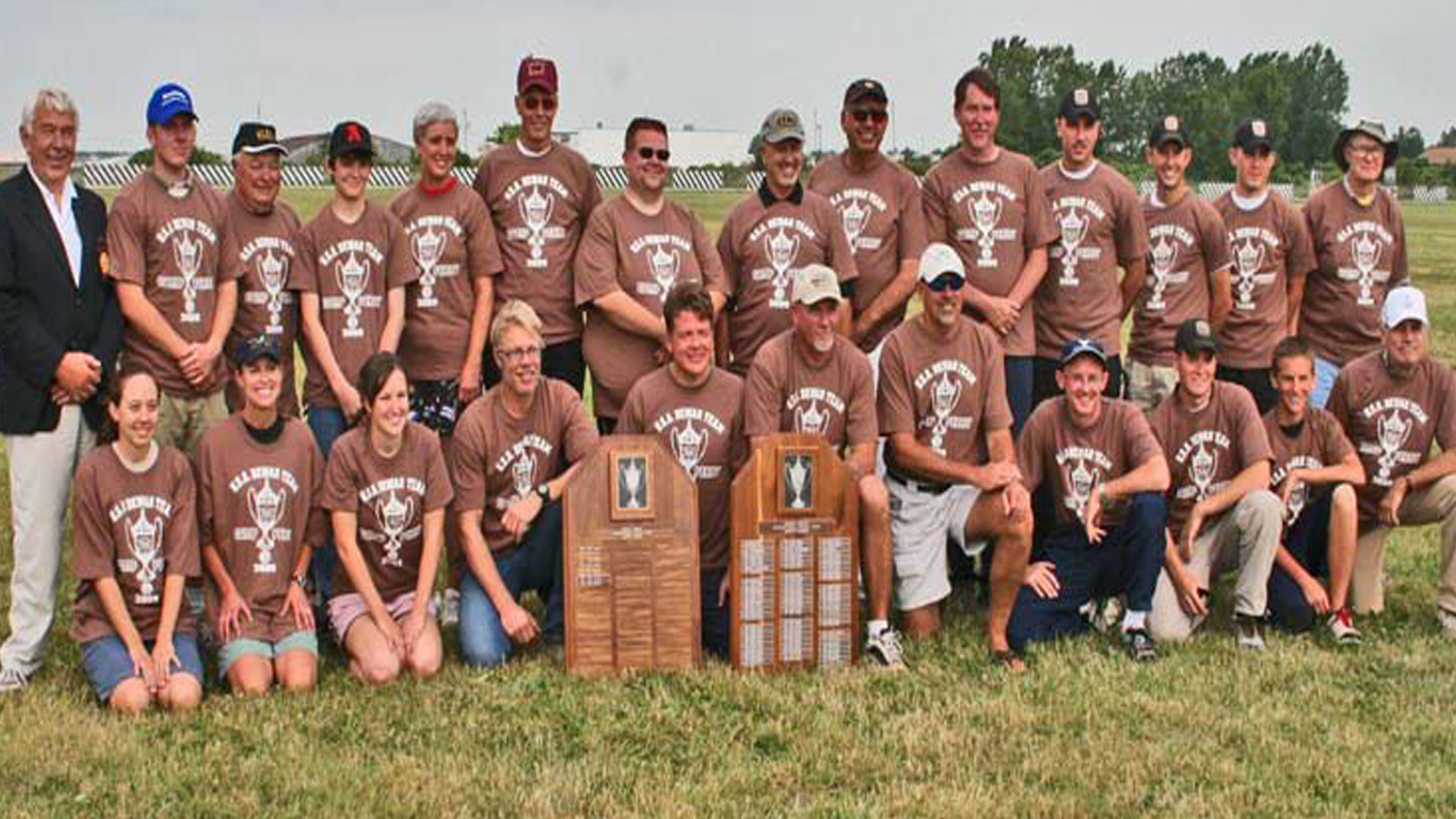
Hein won the metallic sight aggregate with a 2393-170X, followed by teammate Gray who accumulated 2391 points and 162 Xs, while Fowke was in third with a 2390. Reya Kempley was high woman, Dave Cramer took home the high senior honor and Richard Watchorn, from Great Britain, was named the intermediate senior champion.
The third day of the championships is dedicated to team matches. The first was the Dewar Trophy, a postal sponsored by Great Britain. This was a special year as the match celebrated its centennial. Representing the United States were the top 22 shooters from the metallic sight aggregate, Hein, Gray, Reya Kempley, Curtis, Beard, Rawlings, Cramer, Kenneth Benyo, Tarl Kempley, Sprecher, Parnell, Liuzza, Nevius, Lusty Cebula, Douglass Clark, Reeve, Lones Wigger, Jr., Deena McDorman, Paul Gideon, Allen Elliott and alternates Fleeman and Remington Lyman under Team Captain David Kimes and Coach Paul Norquist. The official witness was Richard Watchorn. The Ned Crossman Trophy, awarded to the top scorer on the United States Team, went to Reya Kempley.
Next was the U.S.-sponsored Randle Trophy Match, which is open only to women. In this event, the top 12 women in the metallic sight aggregate shoot the match. This year Kempley, Beard, McDorman, Fleeman, Morrissey, Catherine Kauffelt, Bohren, Anny Bock, Marianne Vitito and Claudia Duksa shot, with Sharon Barazani and Alyssa Gestle acting as alternates. The team was captained by Martha Kelley and coached by Karen Monez, with Watchorn as official witness.
The Army swept the prone team matches with Gray, Hein, Barnhart and Rawlings forming the team. The Ohio Rifle and Pistol Masters were second in both matches. The Kentucky State Rifle and Revolver Association placed third in metallic sights, with the Association of New Jersey Rifle and Pistol Clubs coming in third in any sights. The Texas State Rifle Association team of Samuel Muegge, Hannah Muegge, Katie Bridges and Josh Hartwick toppled all juniors in metallic sight competition, while the California Rifle and Pistol Association Juniors of Sharon Barazani, Amada McMullin, Matthew Koehler and Kevin Sui took junior any sight honors.
Thirty-five teams entered the smallbore Whistler Boy Match and the victors were the Alexandria Junior Rifle Club of David Sloan and Ed Ryznar under the coaching of Terry Lightner. The Made In America Match saw Alan Elliott and Doug Clark going to the wire with identical 399-30X scores, with Elliott winning. In third through fifth places were George Pantazelos, Kent Reeve—who won the most unique rifle award, and George Stephens.
The Randle Doubles/Mentor Match saw a record number of 81 teams entered. Alex Zadrozny and George Pantazelos won. Mike Seery and Paul Gideon were second and Forrest Klein and Hank Gray were third. B Class winners were Magdaleni Mical and Ed Hess, David Brummond and Justin Tracy, and Amada Luoma and Gerald Wise. Peter Croteau and Larry Parker, Sr., bested Brad Driscoll and Larry Parker, Jr., and Jordan McNally and Dennis McNally took the Class C honor.
The individual matches resumed with any sights and in the first Dewar, Barnhart shot a perfect 400-40X for the win. Paul Gideon was second with 38Xs and Dan Holmes was third with 37Xs. Andrew Marzec, a junior from Berlin, Connecticut, won the 100-yard match with a 400-39X. Reya Kempley was second, scoring a 400-36X, with Barnhart taking third on a tiebreaker. Justin Tracy cleaned his target with 38 Xs to edge out Barnhart on a tiebeaker, leaving third to Pennsylvanian Ken Benyo in the Meter match. The third day’s aggregate went to Barnhart with a 1200-114X. Second was William Neff IV who was clean with 107 Xs and Tarl Kempley was in third with another perfect score and 106 Xs.
The final day of the 2009 championship opened with Barnhart shooting yet another 400-40X in the Dewar. Curtis and Nevius were second and third with 39 and 38 Xs respectively. Curtis bounced back to take the 100 yard match with a 400-36X. Reynolds and Duksa tied with 400-33X, with Reynolds placing second and Duksa third. Nevius had a 400-38X to win the final match of the tournament, with Parnell and Barnhart knotted at 400-37X. Parnell was second and Barnhart third. However, Barnhart did win the day with a 1200-110X, one X ahead of second place Curtis and nine Xs in front of Reya Kempley—the same way they finished in the any sight aggregate. Kemply was high woman. Carl Jooss of Champions Shooters’ Supply was high senior, while Greg Tomsen, a retired All Guard rifleman, earned high intermediate senior honors. Michael Seery was both high collegiate and junior, while Duksa and Sui were intermediate junior and sub junior champions.
British rifleman Richard Fowke emerged with the highest score in the tournament, a 4790-355X, but was unable to claim the United States title as it is reserved for a United States citizen, just as it is in his home country. The top United States shooter was Joe Hein with a 4790-354X who took home the service award as well. Fowke did not go home empty handed, as he was declared second over all, civilian champion, and high visitor. Reya Kemply was the woman champion, Dave Cramer senior champion and Paul Gideon the intermediate senior champion. Mike Seery was the collegiate winner, while Sarah Bear topped all juniors. Michael Liuzza and Kevin Sui were intermediate and sub junior champions.
2009 NRA Smallbore Rifle Championship Leaderboard
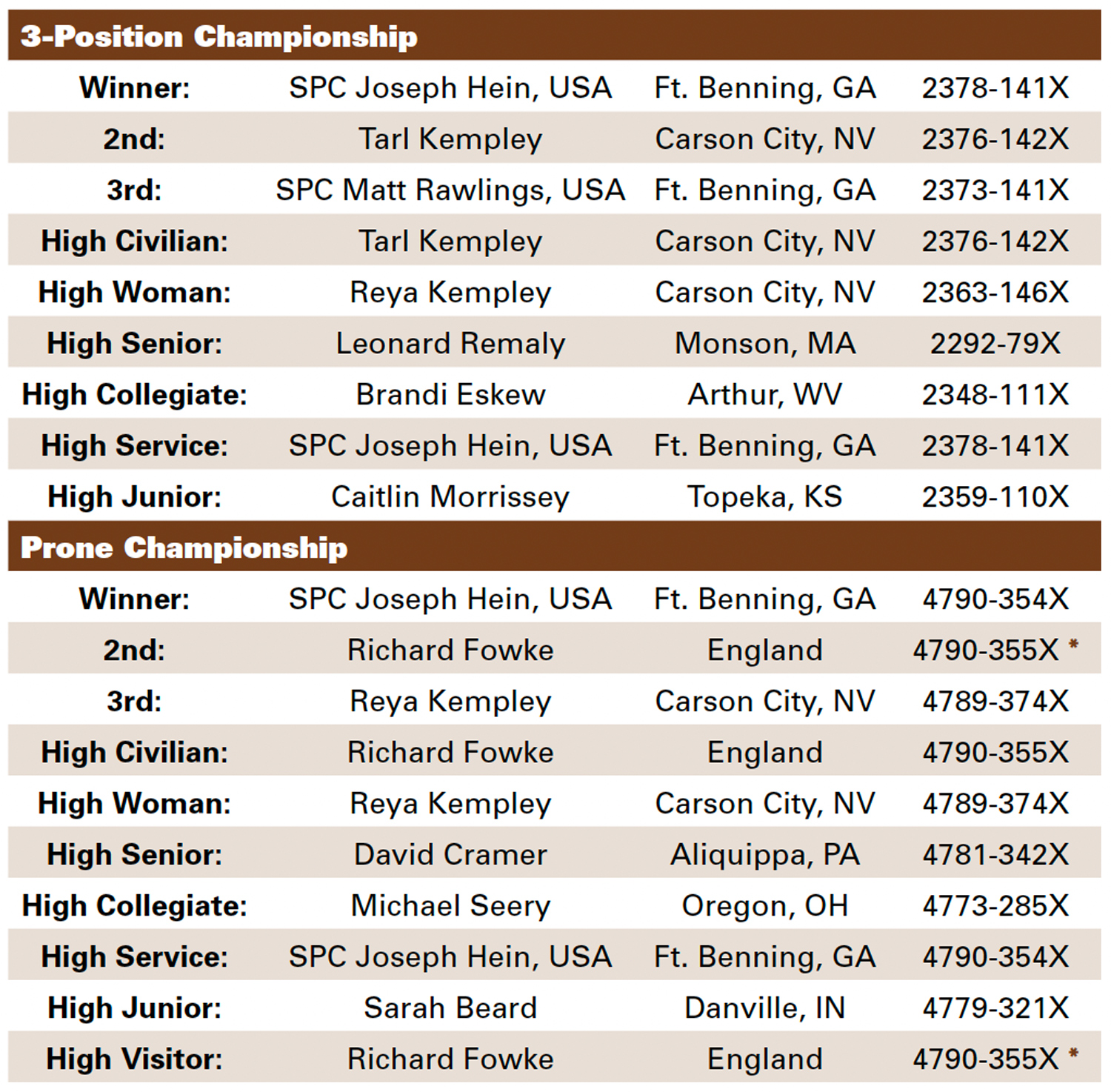
In all it was an anniversary championship like no other, marked by great performances, individual high points and unusual happenings. The 2009 NRA Smallbore Rifle Championships will provide great memories for the dark days of winter and serve as a springboard for the next outdoor season as spring approaches.















